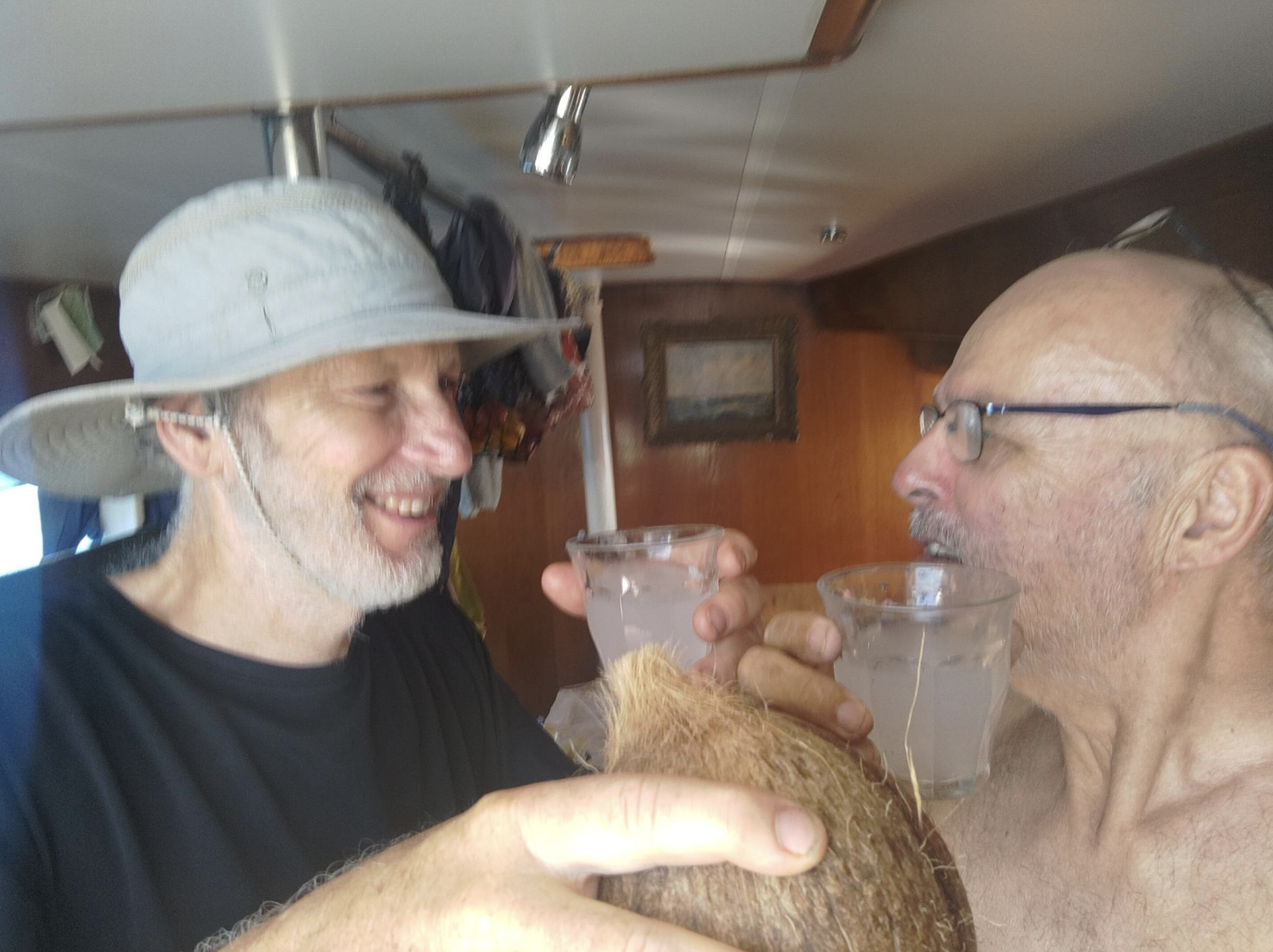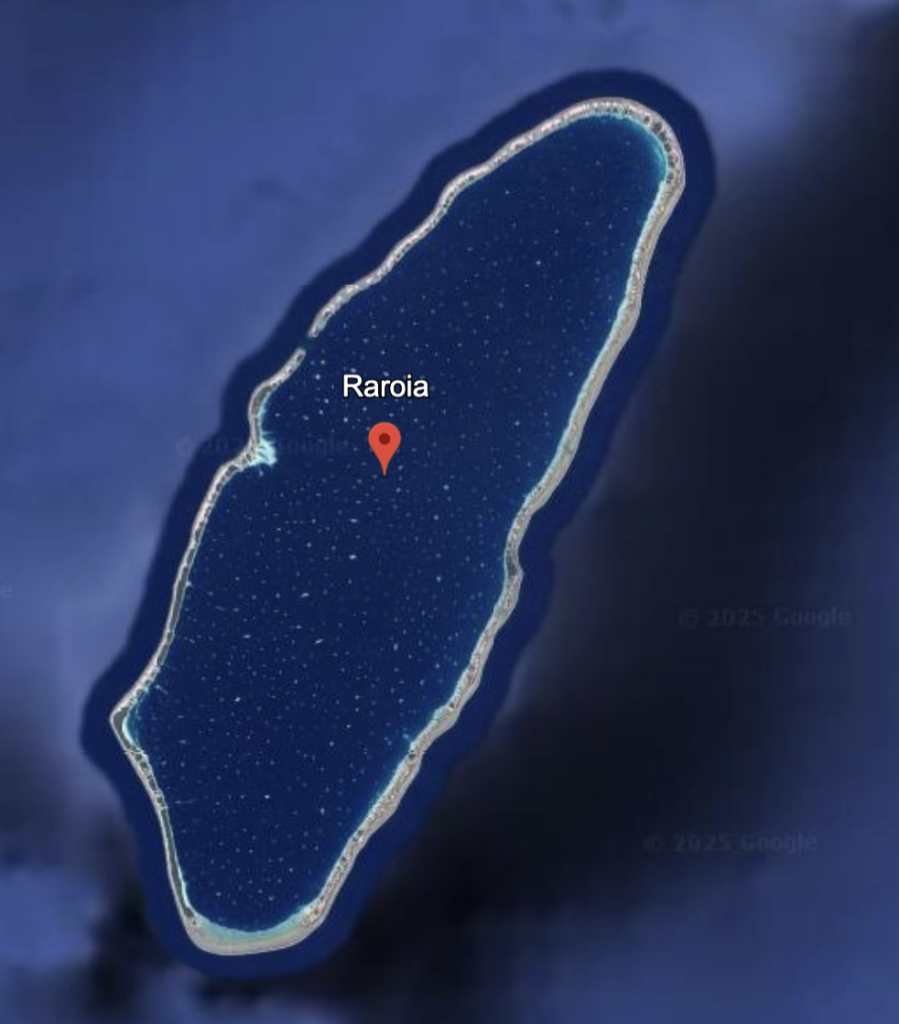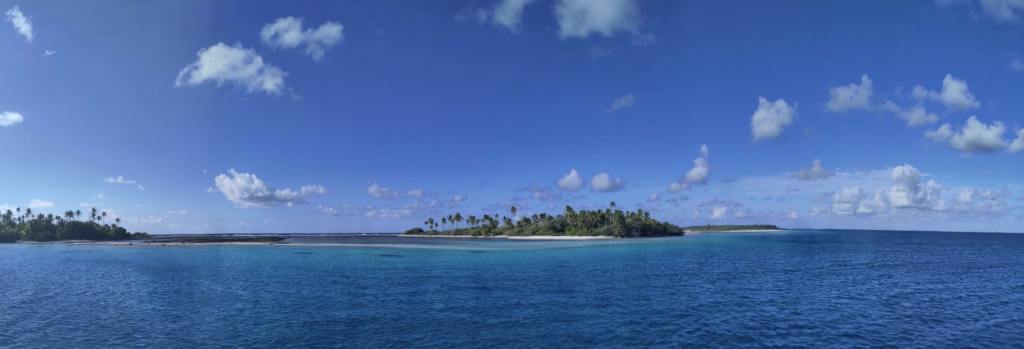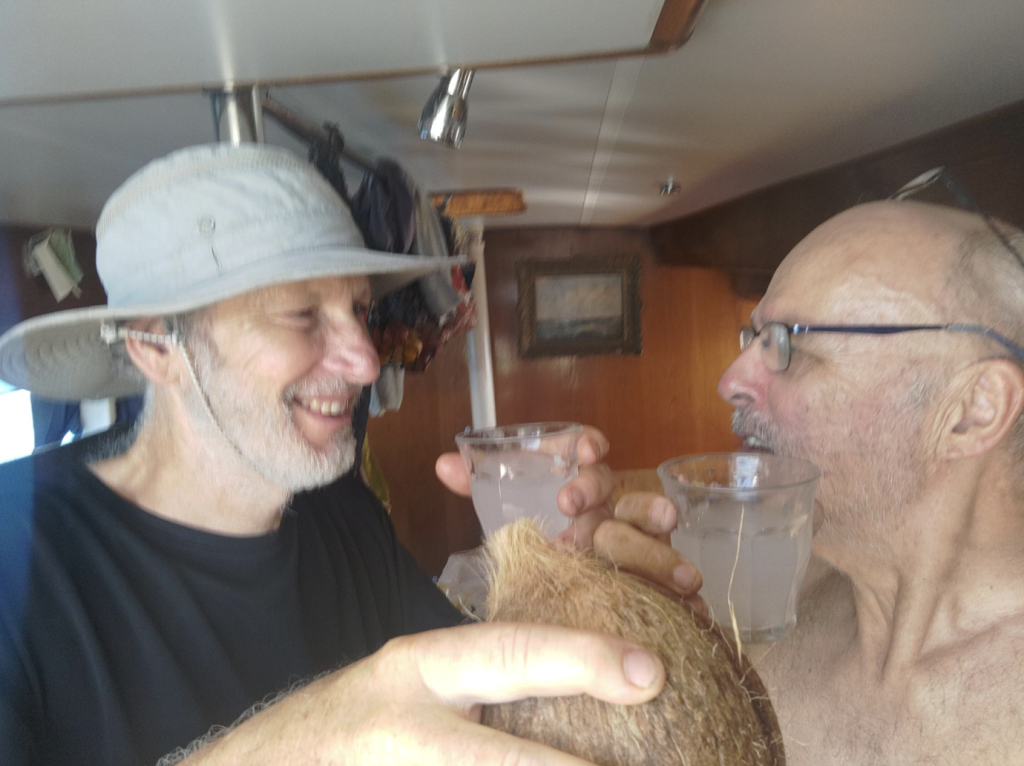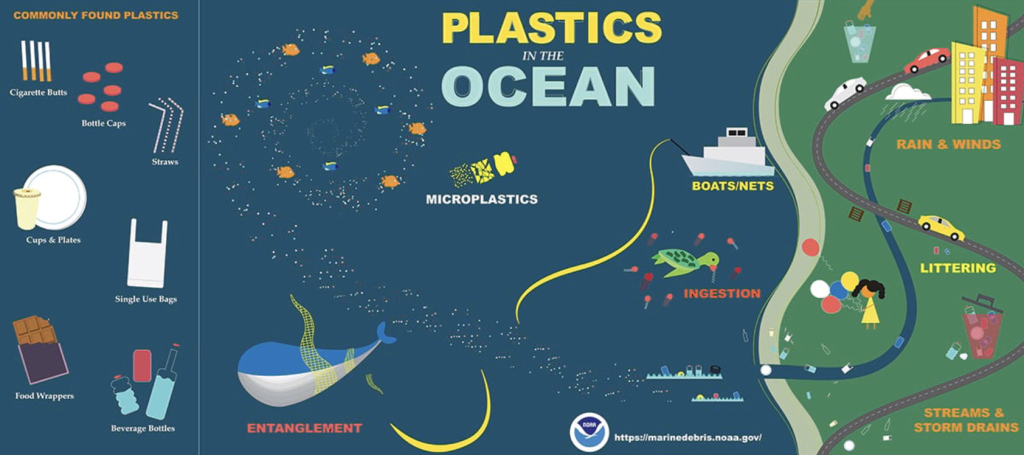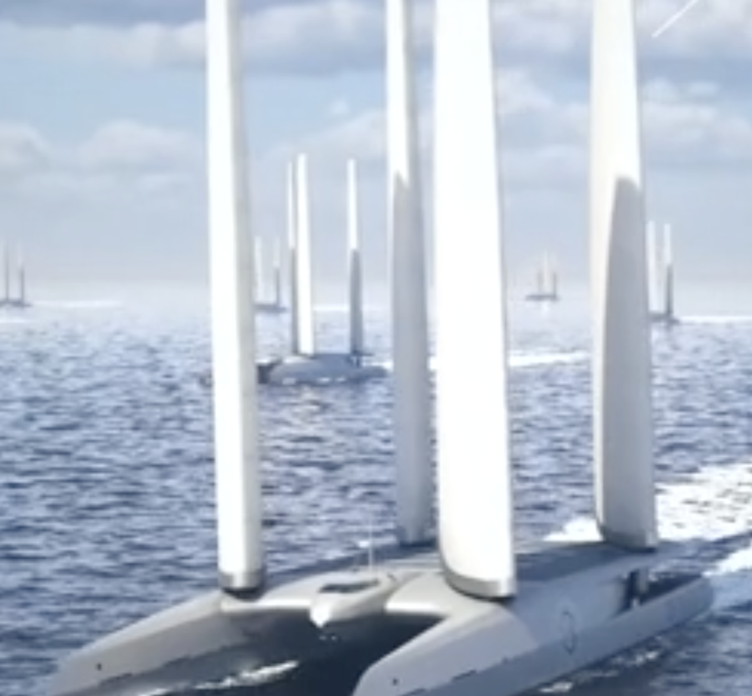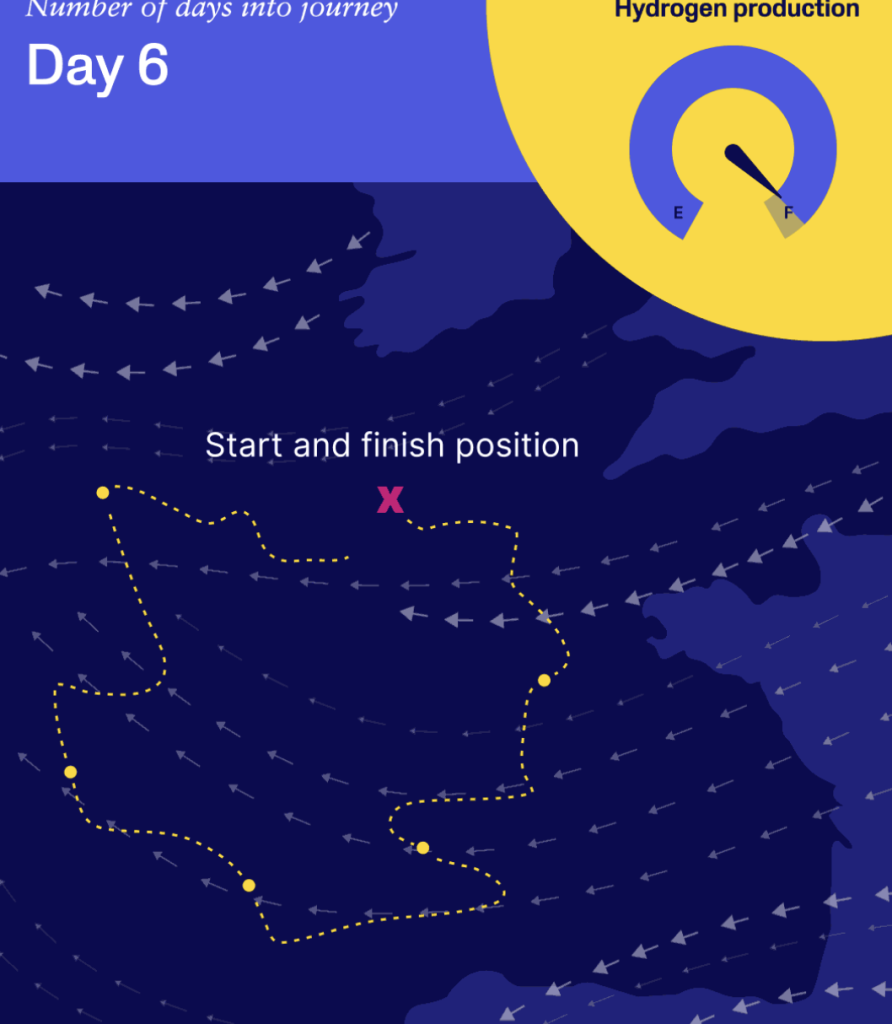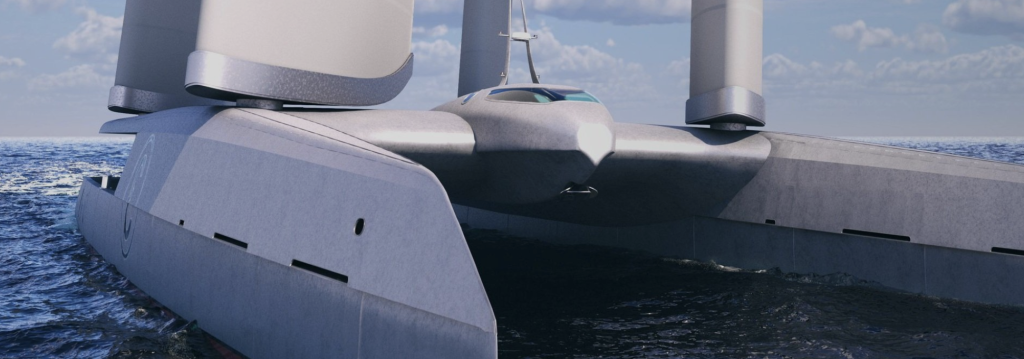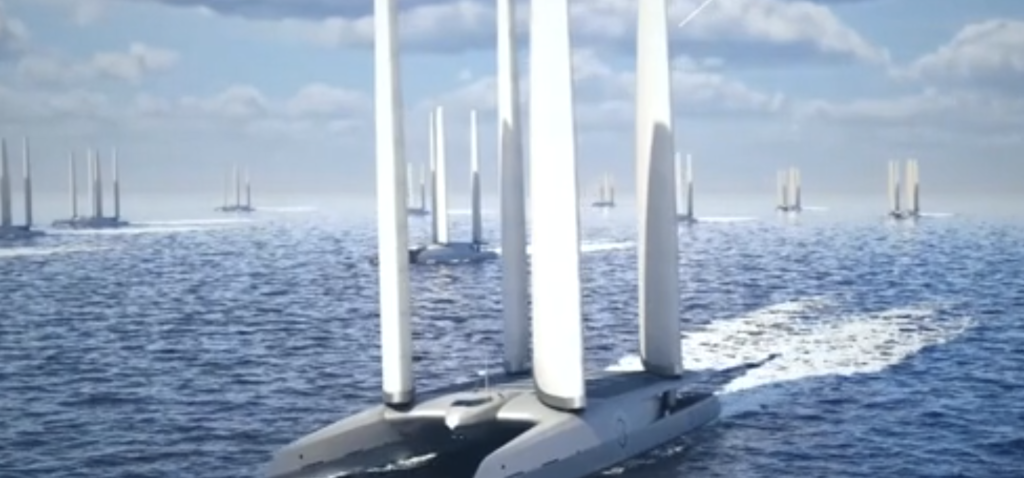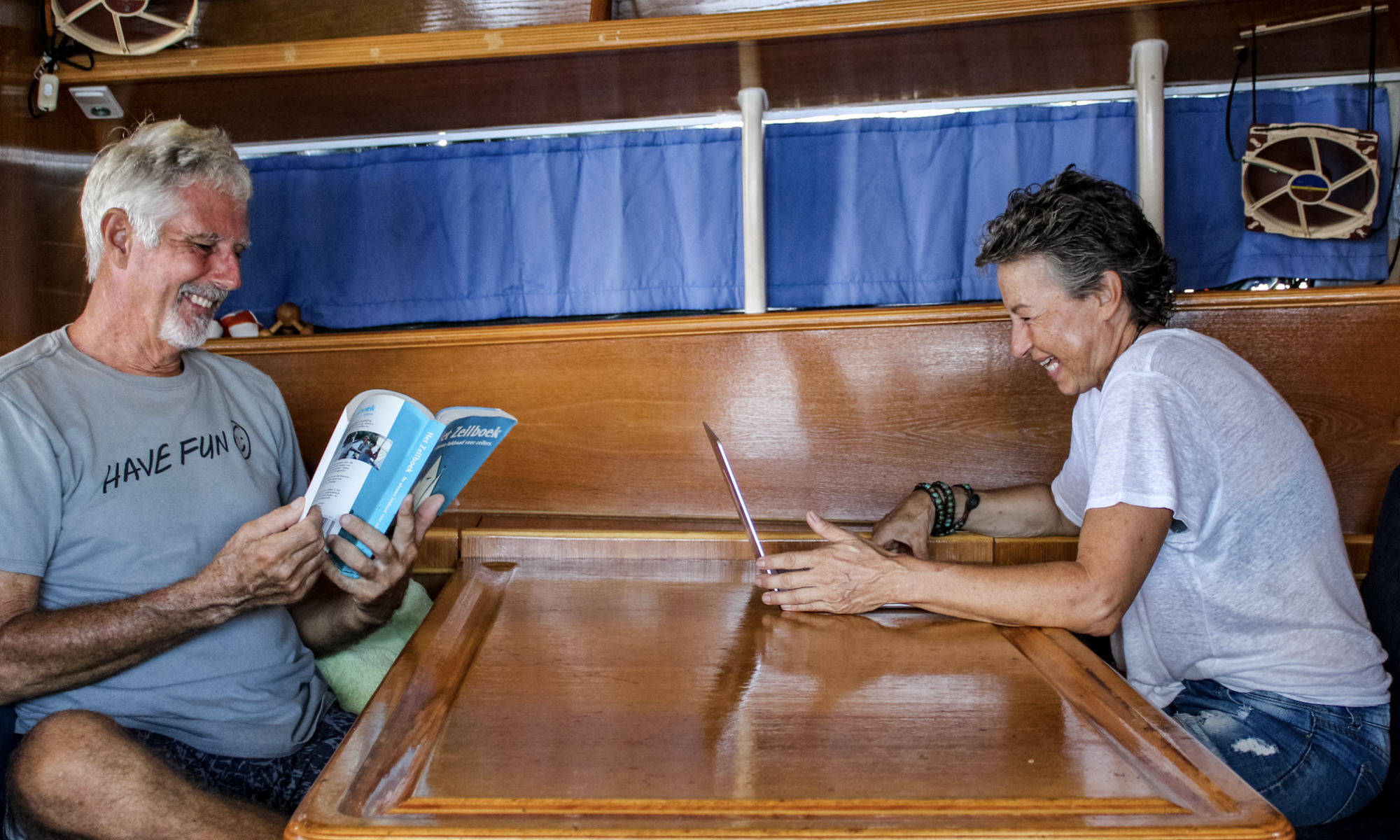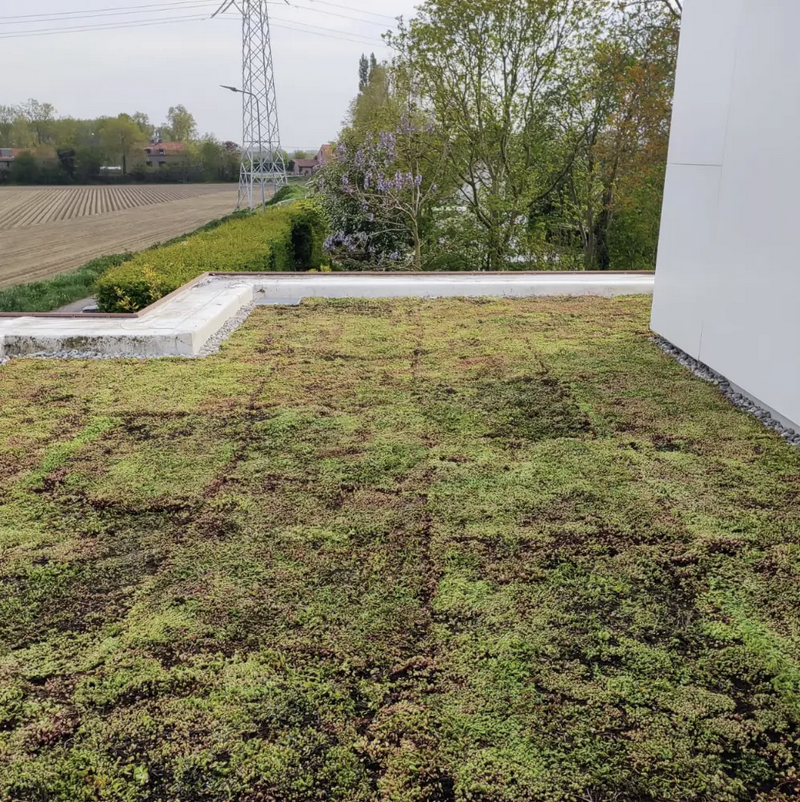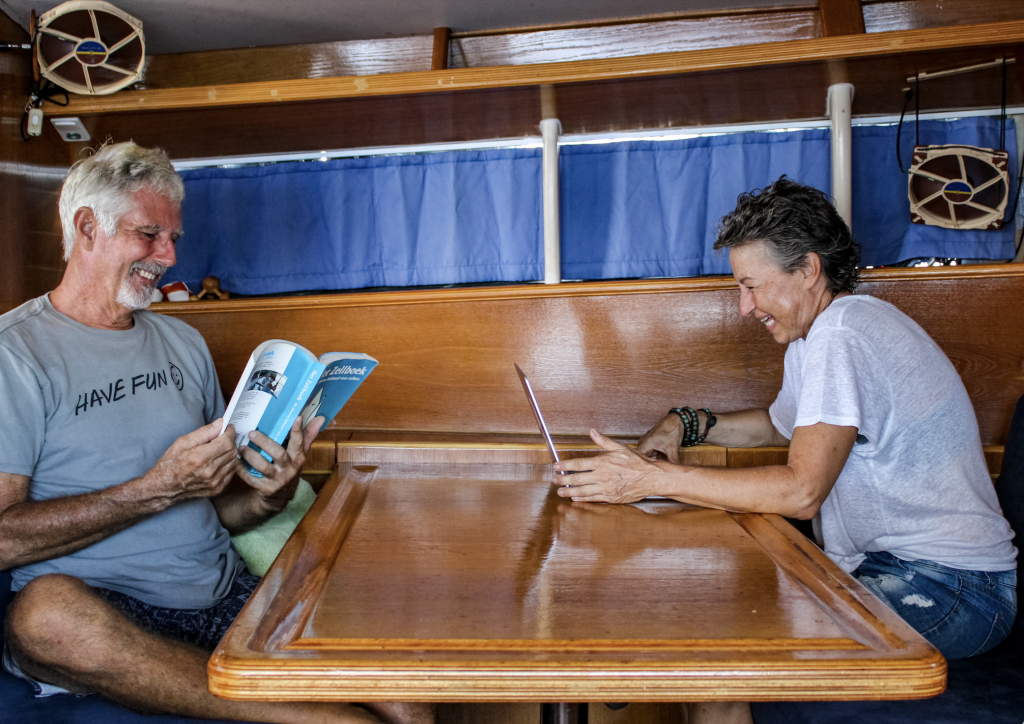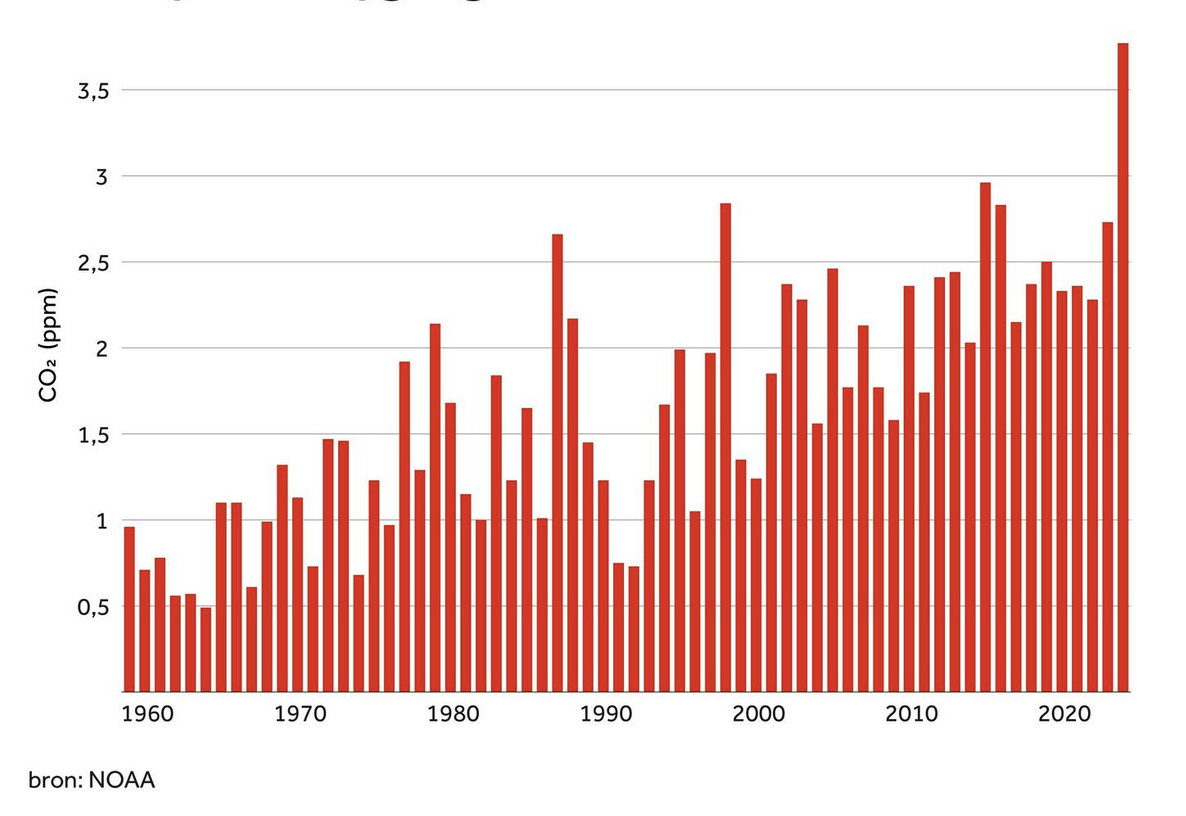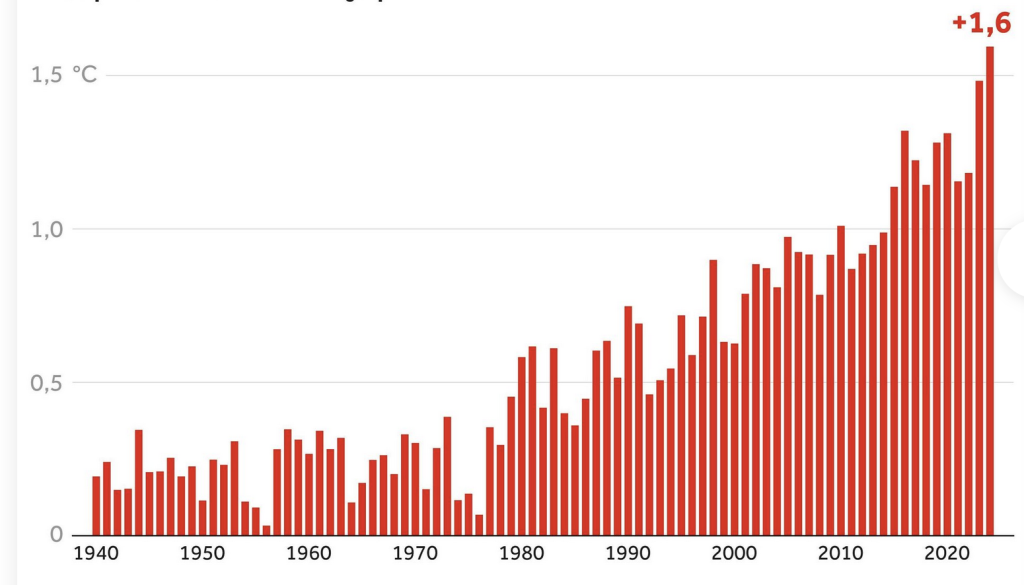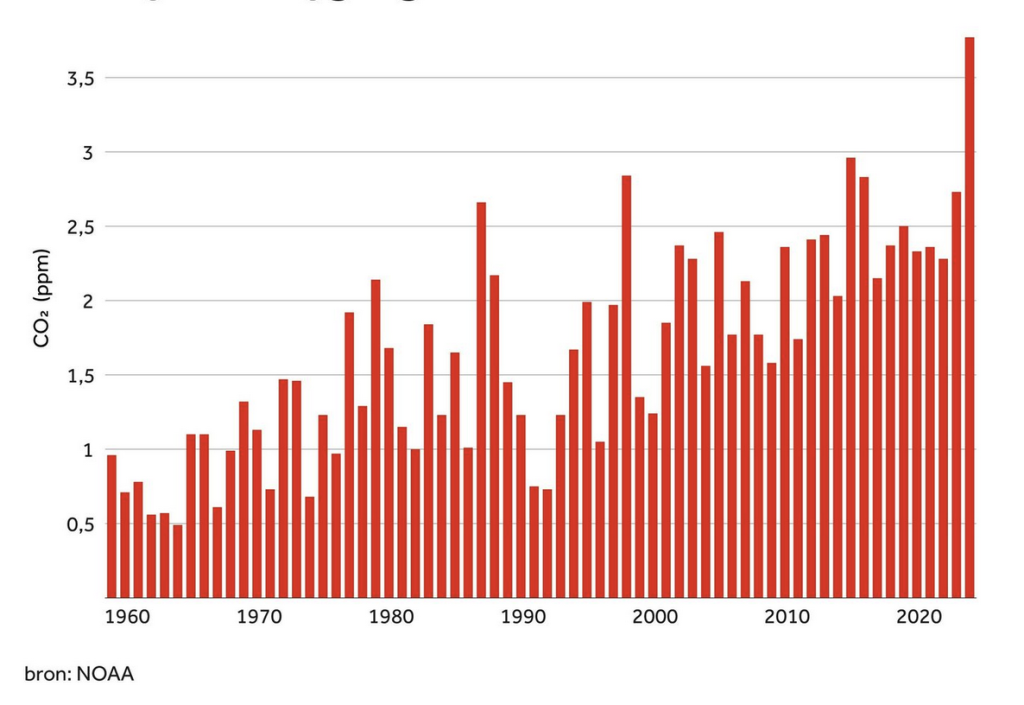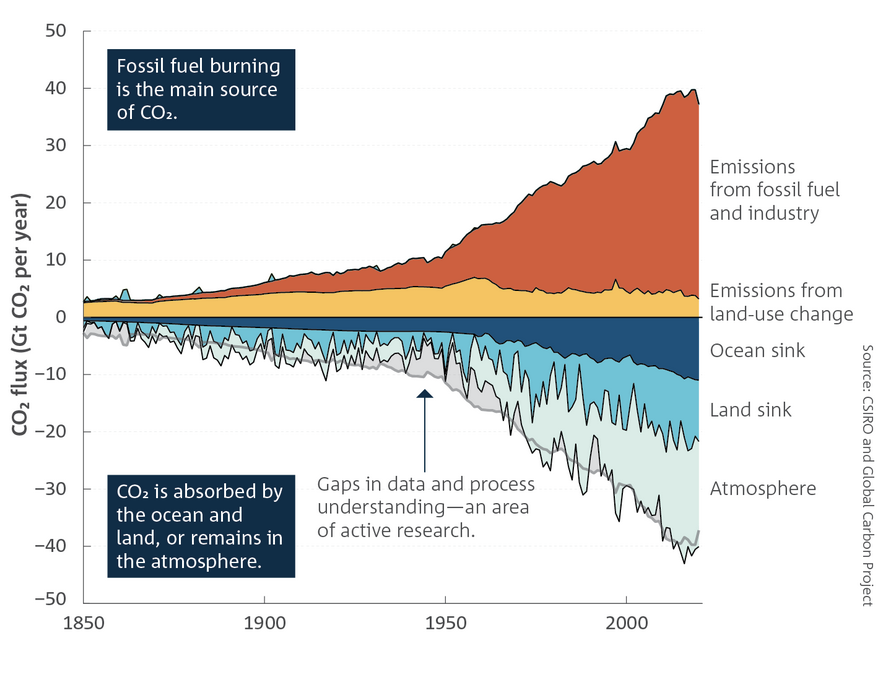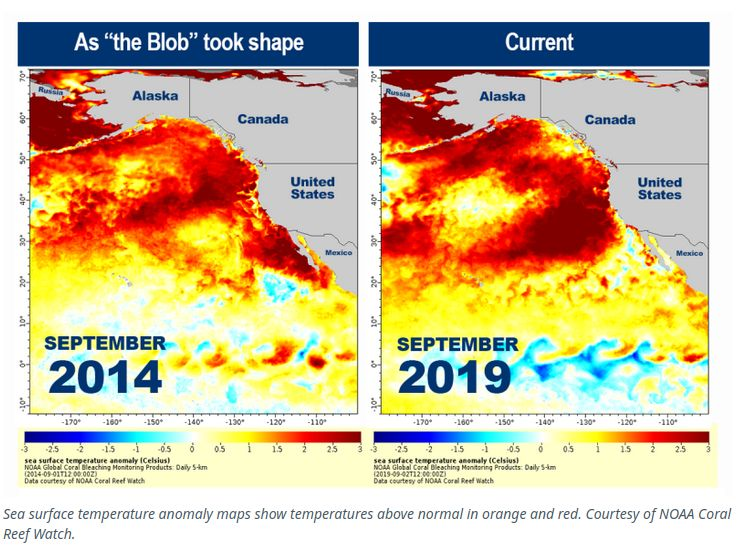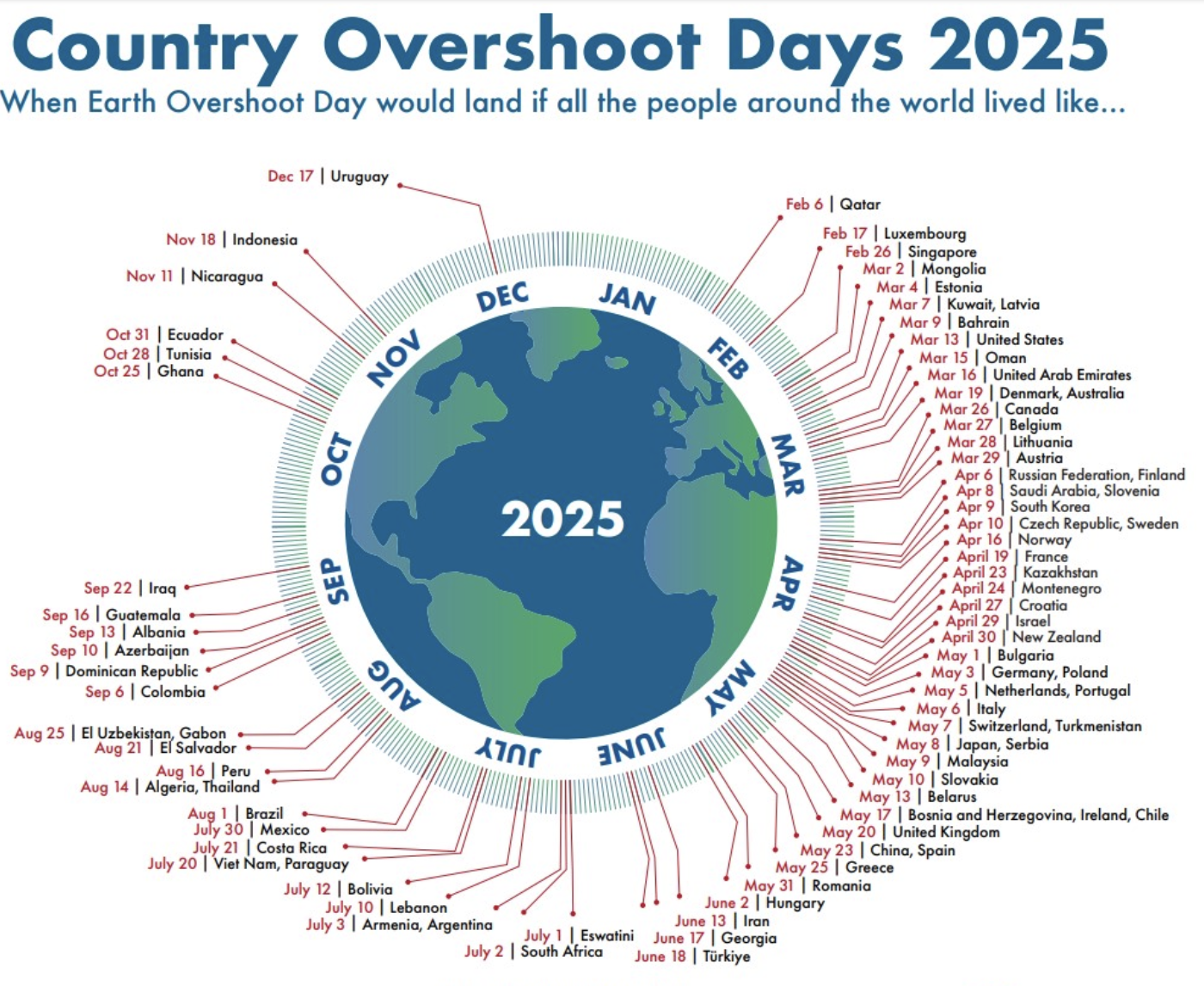About the excitement of the Parasailor and the lesson, learning from canned food, the climax of the way we went through the pass of Manihi,
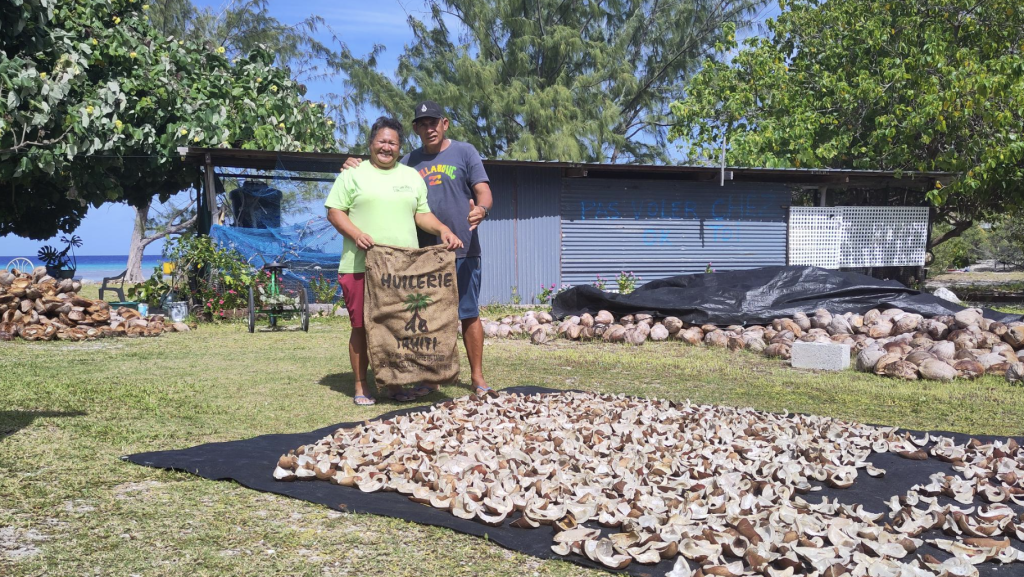
Makemo for a speed date
Wed Jul 09 2025 , 16 37.691s 143 34.405w
Makemo, just to see it.
We saw the village. Did our shopping. Fresh fish!
And, even a bigger surprise, rowing back to the Ya, we saw the Free Spirit next to us, with Jean-Luc on board. Jean-Luc was the man who took care for the Ya in Fatu Hiva when the emergency helicopter brought Peter with his broken vertebra to the hospital in Nuku Hiva. A silent hero.
Thing fall together. He came for dinner and ate our delicious Poisson Cru, (raw fresh fish, ‘cooked’ in fresh lemon juice.)
But, we leave again, going for Manihi, 180 miles to the West North West.
A slow wind and consequently a slow sail ride, zigzagging the ‘bommies’ of the coral. We would get a slow and easy passage through the North West pass. Well, it wasnot. The current was 5 knots and at the end was a whirling water. But is was allright, we got through. We sailed into the night.

Learning from the Parasailor
Thu Jul 10 2025 15 25.355s 144 55.493w
Predictwind would predict the perfect wind for a beautiful Parasailor day. So this morning at 6 o’clock we were ready. But, the wind was a tiny bit more Northerly and didnot really come from behind. Also the wind was a bit stronger. Anyway, we hoisted it: the sock went up, and the 104 m2 sail opened before our eyes, always a flabbergasting breathtaking beautiful moment.
But, indeed, the wind was a bit too strong and we had to sail to the wrong island… Finally we lowered the sail again.
After all it was three hour playing with the sails and a learning moment to set the right sails.
We rounded up our playful day with a dinner feast…. Not.
The dinner. If you are not sure if food from a can would be nice, you take a next can, it can only get better you hope.
The canned chicken porc tasted like plastic. The chestnut just from the can, massively expensive, was like food just from a can. They surrounded the Frankfurter sausages, which tasted like a well wettened piece of cartboard. The cheese from a carton pack, that you can store uncooled, was perhaps the least bad.
It was the first time we left our plates with food on it.
A learning moment to go for fresh food whenever you can get it here.

The first time we did not empty our plates. The boring brownish colour gives an idea how it tasted.
Manihi pass
Fri Jul 11 2025 Manihi
It was still early in the morning when we arrived before the coast of the island Mahini. We saw the pass to go in and the whirly waves related to the outgoing current made clear: we’d better wait.
At 11 o’clock we came back. Mwah, better wait a bit more. At 11:30 we came back and the water was beautiful. We went through the pass, just on the slack between outgoing and ingoing current.
We have become experienced Tuamotu pass sailors. We were so fond of ourselves, that we just anchored somewher. Let us hope that our anchor is not stuck under a ‘bommie’ piece of coral.


